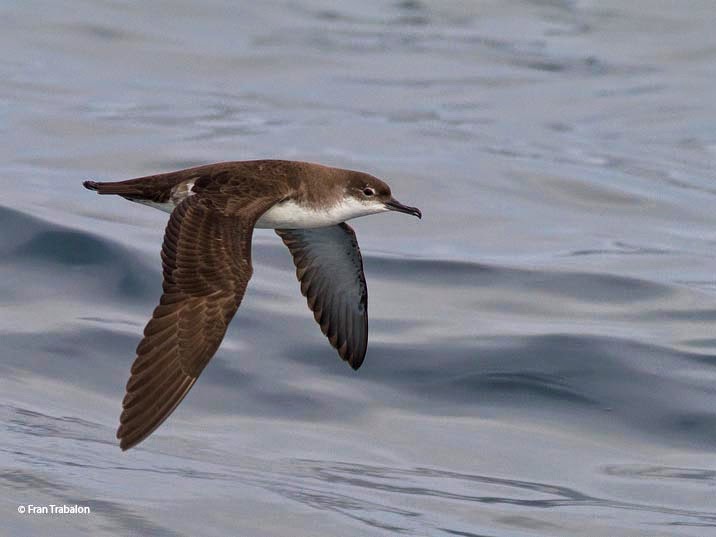Malta is an archipelago in the central Mediterranean Sea (in its eastern basin), some 93 km (58 miles) south of the Italian island of Sicily across the Malta Channel. The Islands' total surface area is 316km squared with a population estimate of more than 400,000. Only the three largest islands Malta, Gozo, and Comino are inhabited. Naturally, the archipelago enjoys a warm Mediterranean climate.
Due to the large population compared to the size of the Islands, there is a very large pressure on Malta's natural resources and on the countryside. There are very few un-urbunised areas in the Maltese Islands and many of these areas are agricultural land rather than natural habitats. Nevertheless, there still exist a good number of habitats that support quite a wide variety of natural wildlife. Unfortunately, in many of these natural places bird hunting is allowed. As many people know, Malta has a very serious problem with illegal hunting as many of the hunters do not respect the laws and kill many protected birds each year. Bird trapping is also a big problem because apart from the large amounts of birds being trapped each year, many trapping sites are built on garrigue, destroying large areas of natural habitat.
With the islands situated in the centre of the Mediterranean, Malta is considered to be a key spot in the migration routes of birds where many birds pass over the islands while they are migrating, both in Autumn and in Spring. Many of these birds only stop by for a short period of time and use Malta as a resting and feeding place during their long journeys. These stops are very important for birds as they allow them to re-gain the energies they need.
Għadira nature reserve is located in the north of Malta in on the outskirts of the town of Mellieħa. The seven hectare reserve comprises of brackish lake and saltmarsh habitat. Due to the dry climate in Malta, permanent areas of inland water are rare, making the Għadira wetlands are an extremely important habitat for birds and other wildlife. Around 140 species of migrating birds are seen annually. Most of the birds seen are migrants, stopping to rest and refuel before continuing their long migration journeys.
Foresta 2000 is an area of natural habitat which has been restored as a Mediterranean woodland. Overlooking Għadira Bay the site stretches almost coast to coast offering not only diverse wildlife, but also fantastic views across the valley. The woodland is a mosaic comprised of steppe, woodland, garrigue and maquis habitat which provide shelter for birds, insects, mammals, reptiles and amphibians.
Buskett is a small area of mature woodland in the south of Malta and is one of the greenest places in the Maltese Islands. Once used as a hunting grounds, the area is now a bird sanctuary, so no hunting or tapping is permitted. Due to the high altitude, Buskett is the best place on the islands to watch migrating raptors in the autumn. During late September, visit in the evening to see Honey Buzzard, Marsh Harrier, Kestrel, Hobby and if you’re lucky some rarer sights such as Short-toed Eagle and Osprey.
The salt pans in Malta can be found between Baħar Iċ-Ċagħaq and Qawra in the north of Malta. The area is a bird sanctuary, meaning no hunting or trapping is permitted. With the saltpans providing an ideal habitat for wading birds, stop by in summer to see Greenshank, Black-winged Stilt, stints and plovers. It is also a perfect resting spot for flamingos to feed and rest on their migration journeys around the Mediterranean.
Rdum tal-Madonna is an important bird area and Natura 2000 site found near L-Ahrax, in the North of Malta. The area gains its IBA status due to a breeding colony of Yelkouan Shearwaters in the cliffs along the coast. The area is also a great location for spotting pipits and wheatears, as well as Malta’s national bird, the Blue Rock Thrush.
Comino is a small rocky island situated between Malta and Gozo. The island is both a bird sanctuary and an Important Bird Area, making it a safe resting spot for migratory birds. On the island you can see migrating raptors, bee-eaters, hoopoes and many other migratory birds.
http://www.birdinginmalta.com/where_to_go.htm

Yelkouan Shearwater © Fran Trabalon
Showing the 5 Most Recent Trip Reports Posted
Malta and Comino 21st – 27th April 2012, author Howard Williams (added May 1, 2012)
Spotting Malta’s secretive Shearwaters at sea, author Helen Raine (added March 25, 2008)
(Malta is a hotspot for Yelkouan Shearwaters, with around 10% of the world’s population breeding here every year)
Take action against illegal hunting in Malta, author Nicholas Crockford (added July 8, 2008)
(Raptor Camp, Malta: 13th to 28th of September, 2008)
Chasing the Wind Chaser - Yelkouan Shearwaters in Malta, author Helen Raine (link created July 12, 2007)
Malta - Raptor Camp 2007, author Nicholas Crockford (link created January 15, 2008)
Showing the 1 Latest Recent Sightings Posted
Island, 2 Hoopoe Lark, male and author Natalino Fenech (added April 11, 2014)